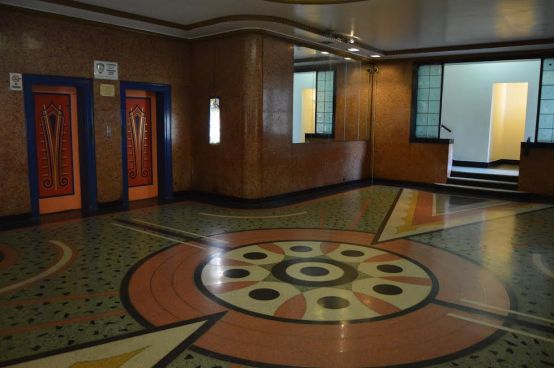By Michael Dobuski
Fordham students, rightfully so, spend a good deal of their city time on Arthur Avenue. It is easy to see why, too: the bustling indoor market, the authentic local businesses and the seemingly endless procession of tantalizing smells promising some form of artery- clogging, greasy Italian goodness. But there is another stretch of road in the Bronx, a much bigger one, which is worth getting to know. It is a street we have all been on at some point or another: the Grand Concourse.
Across the street from the D train’s 167 Street stop lies a barely noticeable apartment building. “Barely noticeable” in this context, meaning that I became hopelessly lost trying to find it. Which means this is a bit of a double feature. We are going to examine the Grand Concourse through the lens of a short walk and a frustratingly tucked-away building. So, what is so special about this one particular apartment complex, about a ten minute walk from the Bronx Borough Hall? The answer lies, as it usually does, under some local history.
Louis Aloys Risse, an engineer, mapped out his vision of the Bronx’s main thoroughfare in the late nineteenth century. The Grand Concourse’s grand opening was held in 1909, replete with its supporter’s visions of a Champs D’Elysees-style center for arts, culture and, most noticeably, architecture. Before this vision was allowed to fully take shape, however, the Grand Concourse’s residential buildings became comfortable homes for the great influx of immigrant families in the 1920s. During the violent 1970s and 1980s, many with the means left the Bronx, and the Grand Concourse’s vibrant, Art Deco buildings fell into disrepair. With the popularity of new and revitalized businesses and green spaces such as The Bronx Museum of the Arts and Joyce Kilmer Park, the neighborhood is seeing something of a renaissance.
The 167th Street D train stop is a confusing one. It features four separate exits from the subway, some of which, confusingly, say “no entry” despite obviously offering a clear path to the street. Once you finally arrive at street level, the story changes. You are immediately greeted by an ornately painted mural, filled with loud reds, pinks and blues centered around the words “It is ok, girl.” The mural is one of many sprinkled around the borough, all of which are signed simply: “Respect art. Don’t tag.” They are interesting pockets of reassurance, positivity and reverence in an otherwise bustling cityscape. The walk south is filled with all the usual Bronx staples: a colourful bodega on 164 Street, an ongoing construction project spanning several blocks, and of course, Yankee Stadium in the distance. It takes until 161 St. to realize that I have been going the wrong way, but the walk was not for naught, because, out of nowhere, a farmer’s market appeared on the sidewalk. It offered all sorts of autumnal fruits, vegetables and baked goods. Suppressing my weakness for apple cider, I cross the street and walk north, in the direction I came. The residential buildings that were in such disrepair only twenty years ago are, for the most part, clean and stately. They have not returned to their former glory, but like much of the borough, are proud. The Art Deco survivors stand in stark contrast to their brutalist and modernist neighbors, and it is easy to see how many in the early 1900s dreamed so big for this place.
Finally, almost directly across the street from where I exit the subway, is my original destination: 1150 Grand Concourse. The place demands attention for a number of reasons, not the least of which is its name: the Fish Building. Its exterior is adorned with an intricate tile mural of an underwater scene, an enormous, wide-eyed and colourful fish dominating the street-facing wall. A step into the lobby reveals even more art deco tilework, which is a theme that extends even to the elevator doors. A mythic-looking painting of Poseidon offsets the hard edges of the rest of the room. What is most remarkable about the Fish Building, however, is that people still live there, which means that all the 1920s style is cleaned and restored regularly. The building, both inside and out, looks new. So if you ever find yourself on Grand Concourse near Yankee Stadium, duck into the Fish Building for a few minutes. It is a genuinely unique escape into the past, and One that could only be found on the Bronx’s other famous avenue.

